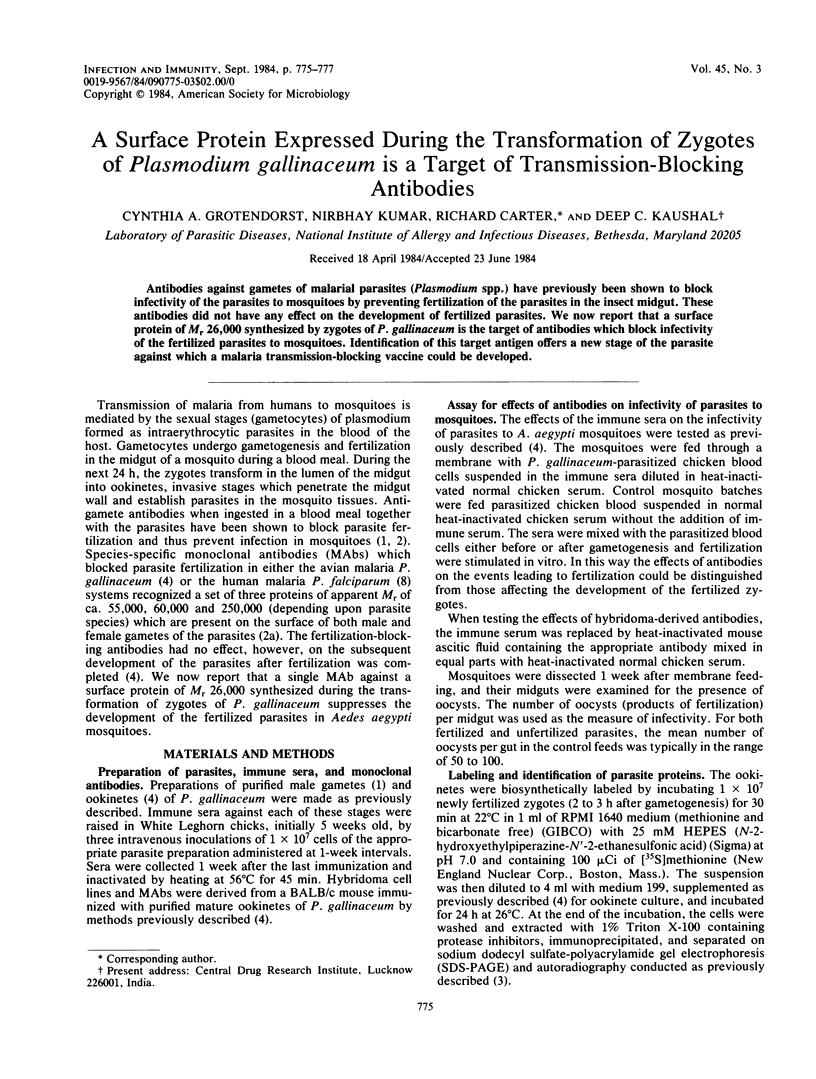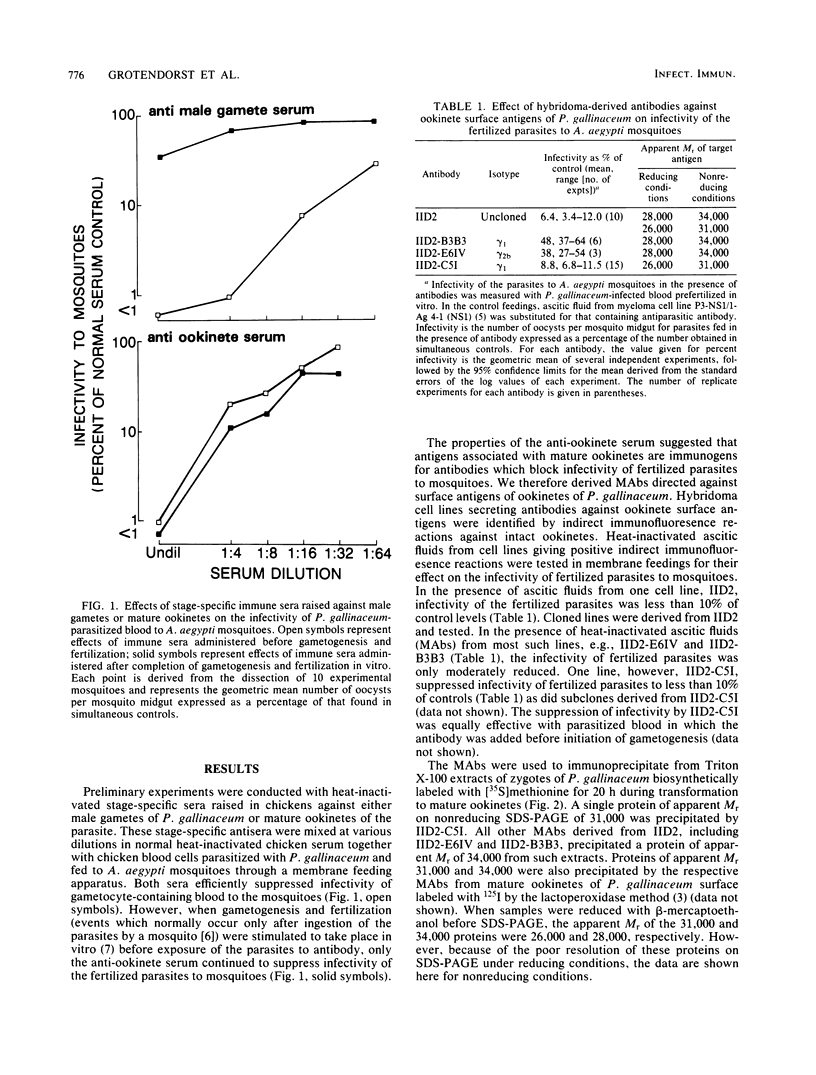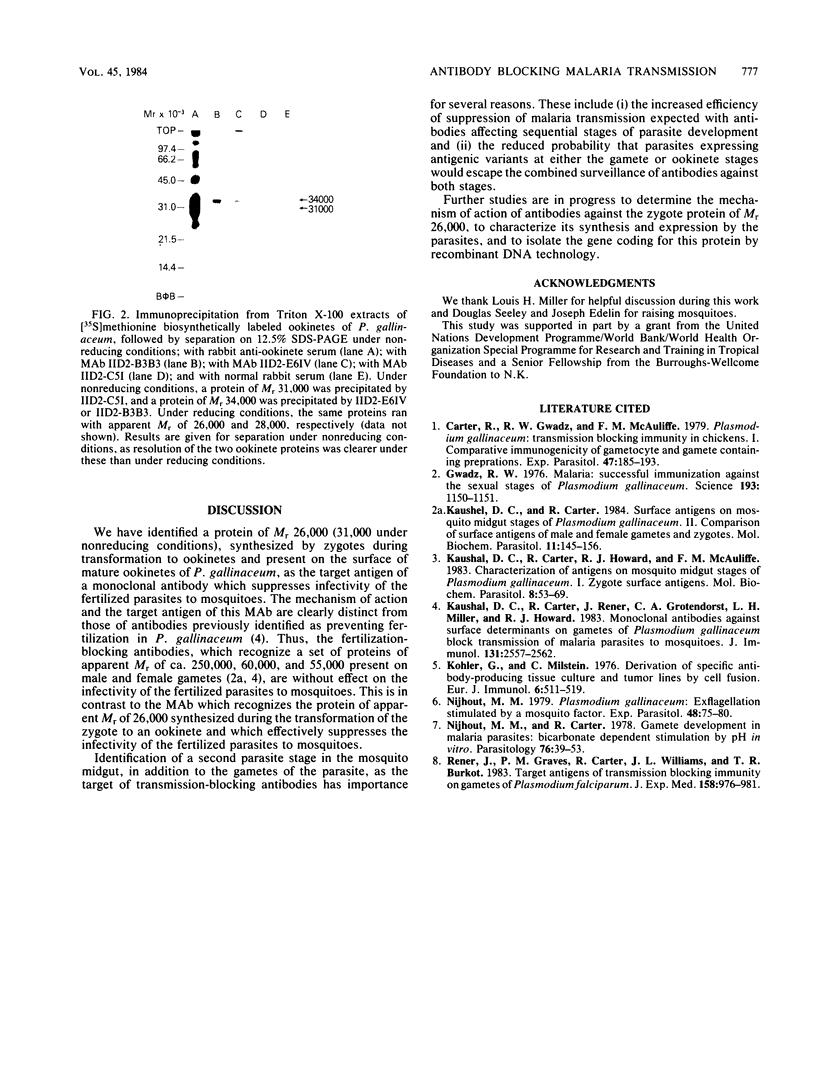Abstract
Antibodies against gametes of malarial parasites (Plasmodium spp.) have previously been shown to block infectivity of the parasites to mosquitoes by preventing fertilization of the parasites in the insect midgut. These antibodies did not have any effect on the development of fertilized parasites. We now report that a surface protein of Mr 26,000 synthesized by zygotes of P. gallinaceum is the target of antibodies which block infectivity of the fertilized parasites to mosquitoes. Identification of this target antigen offers a new stage of the parasite against which a malaria transmission-blocking vaccine could be developed.
Full text
PDF


Images in this article
Selected References
These references are in PubMed. This may not be the complete list of references from this article.
- Carter R., Gwadz R. W., McAuliffe F. M. Plasmodium gallinaceum: transmission-blocking immunity in chickens. I. Comparative immunogenicity of gametocyte- and gamete-containing preparations. Exp Parasitol. 1979 Apr;47(2):185–193. doi: 10.1016/0014-4894(79)90072-9. [DOI] [PubMed] [Google Scholar]
- Gwadz R. W. Successful immunization against the sexual stages of Plasmodium gallinaceum. Science. 1976 Sep 17;193(4258):1150–1151. doi: 10.1126/science.959832. [DOI] [PubMed] [Google Scholar]
- Kaushal D. C., Carter R. Characterization of antigens on mosquito midgut stages of Plasmodium gallinaceum. II. Comparison of surface antigens of male and female gametes and zygotes. Mol Biochem Parasitol. 1984 Apr;11:145–156. doi: 10.1016/0166-6851(84)90061-6. [DOI] [PubMed] [Google Scholar]
- Kaushal D. C., Carter R., Howard R. J., McAuliffe F. M. Characterization of antigens on mosquito midgut stages of Plasmodium gallinaceum. I. Zygote surface antigens. Mol Biochem Parasitol. 1983 May;8(1):53–69. doi: 10.1016/0166-6851(83)90034-8. [DOI] [PubMed] [Google Scholar]
- Kaushal D. C., Carter R., Rener J., Grotendorst C. A., Miller L. H., Howard R. J. Monoclonal antibodies against surface determinants on gametes of Plasmodium gallinaceum block transmission of malaria parasites to mosquitoes. J Immunol. 1983 Nov;131(5):2557–2562. [PubMed] [Google Scholar]
- Köhler G., Milstein C. Derivation of specific antibody-producing tissue culture and tumor lines by cell fusion. Eur J Immunol. 1976 Jul;6(7):511–519. doi: 10.1002/eji.1830060713. [DOI] [PubMed] [Google Scholar]
- Nijhout M. M., Carter R. Gamete development in malaria parasites: bicarbonate-dependent stimulation by pH in vitro. Parasitology. 1978 Feb;76(1):39–53. doi: 10.1017/s0031182000047375. [DOI] [PubMed] [Google Scholar]
- Nijhout M. M. Plasmodium gallinaceum: exflagellation stimulated by a mosquito factor. Exp Parasitol. 1979 Aug;48(1):75–80. doi: 10.1016/0014-4894(79)90056-0. [DOI] [PubMed] [Google Scholar]
- Rener J., Graves P. M., Carter R., Williams J. L., Burkot T. R. Target antigens of transmission-blocking immunity on gametes of plasmodium falciparum. J Exp Med. 1983 Sep 1;158(3):976–981. doi: 10.1084/jem.158.3.976. [DOI] [PMC free article] [PubMed] [Google Scholar]



